Unpopular Opinion: Car Dependency Is Killing Our Wealth And Health
Fact: Since 1984, more Americans have been killed in car crashes than have been killed in all wars in U.S. history.

Since the first person was killed by car in the United States in 1899, over 3,730,000 people have died in car crashes. So in 120 years of car crashes we’ve lost almost three times as many people as we’ve lost in 250 years of warfare.
Sorry to darken your day. Also sorry if this makes you uncomfortable or if you don’t like reading it because you’re a car person. Facts are facts. As I always tell people you have the right to your own opinion, you do not have your right to your own facts.
Now let me be clear, in no way am I equivocating the death of a US Soldier in a wartime scenario, which is presumably intentional, to the death of a person in a car crash, which is presumably accidental.
Regardless, they both end up six feet in the ground.
Additionally pedestrian deaths from drivers in the U.S. were up 35% last year and at 6,227 deaths were the highest since 1990.
Despite what a few commenters have said on my blog, I am not anti-car. I am, however, not really jazzed about how America intentionally develops huge swaths of the country in a way that makes it virtually impossible to get anything done without using a car.
Especially when we know how dangerous, costly, and polluting they are.
Suburbia
Go to the suburbs of any major city in America and you’re likely to find the same thing. Endless windy streets usually ending in cul-de-sacs, accessible only from one or two main “feeder roads”.
You can drive seemingly forever in these tree lined neighborhoods, often forgetting how you even entered. You’ll see symmetrical rows of big houses with garages and SUVs everywhere.

Car Dependence – Probably not a single store in the entire image for these poor folks.
But one thing you won’t likely see is a store. Because once you’re in the ‘residential zone’, stores are forbidden.
That means for any of the poor folks living in these areas, getting something as simple as a pack of gum or a quart of milk involves getting in their car and driving. Sometimes an absurdly long distance.
The stores, in a stroke of genius, are in a big “town center”. The town center is surrounded by 200 acres of parking lot set up like a moat to a castle.
Even if your house was close enough to walk to the town center, you’d have to cross a long, desolate stretch of mostly empty and barren concrete parking lot to do it. You’d have to constantly be on alert of cars whizzing by, often driven by people playing with their cell phone. It would be a miserable walk, not that you’re going to try.
Many of these areas don’t even have sidewalks anyway. Why bother. Who would want to walk here?
So the houses are where the houses are, and the stores are where the stores are. And the gap between them is nothing but concrete and innocuous, non-native juniper trees.
It’s clear these environments are for cars, not pedestrians. This, quite frankly, is madness.
Twilight Zone-ing
This isn’t an urban planning blog. For the most part I stick to finances or behaviors and aspects of lifestyle that affect finances. I’m also a dork, and have read more urban planning books than I’d care to admit. But I’ll spare you a treatise on how we can design these car-dependent suburbs better.
The one thing that can be done at the broadest level is to promote mixed-use zoning. What is that?
Mixed use zoning is:
A development strategy that blends residential, commercial, cultural, institutional, or entertainment uses, where those functions are physically and functionally integrated, and that provides pedestrian connections.
I’m not advocating that everyone has to live in a city, or a highly dense urban environment. Mixed use zoning, when done well, allows for a suburban feel but with amenities such as stores and parks in walking or cycling distance. Less time in the car, more time actually out engaging with your neighbors and being part of a community.
Social Deserts
Studies show time and time again as the US has been getting richer, it is also becoming less happy. Some social scientists have found the main factor powerful enough to curb people’s self-reported happiness in the face of increasing wealth is our country’s declining social capital. The decline of social networks (real ones, not the toxic ones only seen through a screen) and interactions in everyday life are more corrosive than the income gap between rich and poor.
Bottom line – real personal social interactions are crucial for happiness. I’m not sure why this surprises anyone but it shows how far we’ve gone down smartphone rabbit holes in the past 10 years.
But car-dependent and single-use zoned suburbs create social deserts. In today’s suburbs the only walkers you usually see are with their dogs, dutifully doing a robotic lap around the street with head buried in their cell phone, waiting to pick up poop. You can sometimes drive for miles and not see a single soul on foot or bike.
Walkable neighborhoods lead to better mental and physical health, and are also better for your bank account. In walkable neighborhoods, the elderly keep their independence much longer because they can often satisfy their daily needs on foot. Thus, they keep their muscle mass by moving more, and maintain more social interactions for mental health.
Walkable neighborhoods give children more independence. Mom and Dad wouldn’t be nearly as stressed if they didn’t have to drive their kids to every single activity. Kids like bikes and freedom, I’m sure most would rather ride to practice if it were a viable option.
Go From 4 Wheels To 2
Speaking of bikes, regular readers know I’m an avid cyclist and ride a lot. Last year I rode bicycles more miles than I drove my car, and I’m proud of that, not to mention much richer and healthier.

Fully Loaded With Trader Joe’s Goodness
Getting around by bike is a perfect compromise between the overkill and wasteful excesses of a car, and the slowness of walking. A bike allows you to move quickly and nimbly, yet still be outside of a bubble that shields you from interacting with your neighbors and your environment.
But I’m a realist. I know that we who use our bikes to run errands and commute to work are a small minority of the population, and that’s probably not going to change anytime soon.
America is a nation that demands escalators to second floor health clubs. It is what it is, cycling isn’t going to suddenly explode in popularity in a country that prefers easy-buttons and shortcuts over a little sweat and effort.
But you’re different because you read personal finance blogs and are focused on life improvements. So consider getting a bike to ‘walkify’ your neighborhood, it works even if you don’t have sidewalks.
How Does This Affect Your Finances?
Let’s talk money. Transportation costs are one of the big three and for most in America it’s their vehicles and the things the vehicles need, such as gas, insurance, and maintenance.
The more you drive, the more gas you use, the more you pay. And of course the faster your vehicle gets to that expensive 30,000 maintenance checkup. You know, the one where the mechanic informs you that not only do you need tires, you need brakes too.
There goes $1700, kapoof.
Nerdwallet estimates the average cost of vehicle ownership for a vehicle driven 15,000 miles to be $8,469 per year. And they got their data from AAA, an organization that often tries to cover up anything negative about cars. If you think that sounds high then check out Mr. Money Moustache’s detailed breakdown of all the hidden costs of commuting in a car that you’re probably not considering.
I’ve showed before how simply driving a more fuel efficient vehicle can save you over $100,000 in 20 years. But that’s just saving on fuel. If you drove fewer miles overall the savings would be much much higher. Cars aren’t one of the big three expenses for nothing.
Let’s Improve
How can we improve this situation? We can designate more mix used zoning, and actually allow people to have a corner store on their street.
Social interaction and civic engagement will increase. Driving will decrease, pollution will decrease, and deaths from cars will decrease. Waistlines will slim down, but bank accounts will fatten. Financial independence would be achievable for so many more people.
A guy can dream….
Things are improving. This concept has been catching on, and mixed use zoning communities have been popping up in pockets across America.
When they do, they’re usually incredibly popular and thus incredibly expensive. There’s a reason for that.
Many people have had enough. Enough of the trappings of car dependency. Enough of the bulging waistlines, high blood pressure, and diabetes risk their car dependent lives have devolved into.
They see a walkable and bikeable neighborhood and they see a better way. A better way to build, to foster a sense of community, and to live.
I can only hope the trend of mixed use zoning continues to spread. We have a lot of work to do to create livable communities that don’t require a trip in a car to do everything. If for nothing else, we need to do it for our health, and our wealth.
If I didn’t convince you, then Jeff Speck will probably do better. Where I differ from Jeff is that he argues for big city living, while I’m convinced well designed suburbs are possible.
Your Turn – Let me have it. I know America loves its cars and there are a ton of car people out there, so I’m sure they held their nose while reading this. But if you live in one of these car-dependent suburbs, wouldn’t you like to have a store to walk to? All comments are welcome just keep it civil.






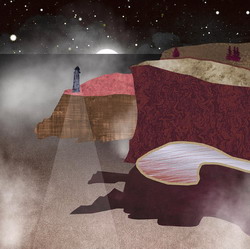




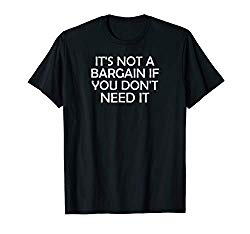
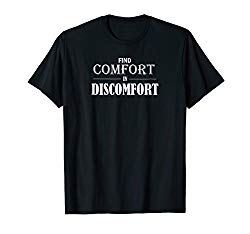





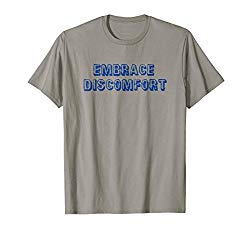





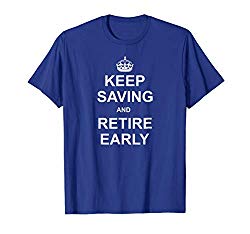

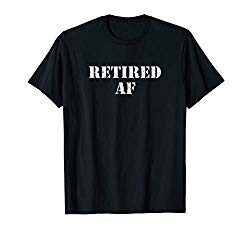


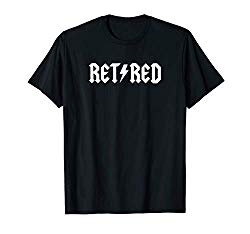












Interesting concept Dave. Not sure how feasible it is to make a major impact in the country as it will likely only apply to new development areas.
It is interesting because in the past it seemed like having stores near your home would actually detract value. But I guess a very well planned walking/biking community could minimize the visual distraction and as you say place a premium for the sellers.
Where I am it is impossible to do anything without a car (natural waterfalls unfortunately do not often find themselves in the center of a city). But all the points you make are valid. European countries that are predominantly biking based tend to have healthier lifestyles and inhabitants that lead productive lives and live longer than their US counterparts.
Ha, waterfalls and walkability don’t usually mix 🙂
Another thought provoking post.
It would be nice to achieve your dream. Unfortunately, I don’t see it happening. I appreciate the fact that you’re living what you advocate for society. In my experience, most people talk about these things to make themselves feel better. They talk about improving the environment with their Chevy Suburban for mom, the Lexus for dad, and the two cars for the kids.
And have you noticed all of the Teslas in our area? I have. Those are seemingly environmentally friendly cars. Yet to produce those batteries that power those cars uses more energy than the cars save. I’m sure others will debate this. I’ve read several stories to confirm. Not to mention the price of those things. Geez.
With the metro expanding to Reston and Loudoun County, the mixed use concept is growing. But the assumption that people won’t have cars is ludicrous. Most of these folks don’t work in Reston. They may live and shop near their homes and take Metro to work, but on the weekends, they’re going to drive places. And the density is already crowding the streets near these areas.
I wish I could be more optimistic about your lifestyle taking hold. Sadly, I don’t see it happening, especially in a dense place like where we live.
I’m a bit more optimistic than you but by no means do I think it’ll catch on big. There has been lots of progress though, just look at Reston Town Center out by you, a great mixed use community. But other parts of Reston are…. not so much.
Good piece here mate! Much wisdom, hope people will actually start taking some action because of it (naïeve perhaps, but you got to stay positive, right?)
Team CF, I’m sure where you live in the Netherlands it’s very walkable and bikeable. Don’t they have more bikes than people in your country? 🙂
You don’t get to comment on this since where you live there are more bikes than cars. Kidding 😉
I live in just a few block away from a “mixed use” concept – a small town (900 people) square that has everything I need to function. The kids play at a park a couple blocks away. No Walmart, no traffic lights. Little stress. Mixed use can mean large city, suburb, or small town!
“No Walmart, no traffic lights. Little stress.” Perfect!
Our old house in Hillsboro, OR was pretty good. It was suburbia, but there are many stores in biking distance. It also had access to light rail. It wasn’t bad. I still like urban living better, though.
Now, we live in a dense neighborhood. We can walk to Trader Joe’s and there are many restaurants and cafe just a block away. I love it. I walk half a mile to meet my son at the bus stop every day and we stroll back home. It’s great to be on the ground.
Of course, there are trade offs. Housing is much more expensive in this area. We kept it low by living in a smaller home, but I’d like to live in a nicer home someday. Next time we move, it’ll probably be to some place more rural so we can have plenty of space.
Housing is more expensive in those great areas, which shows how they are valued more. That’s why I have some optimism.
My inlaws are now living at an Assisted Living in San Jose, having sold their suburban home and given up their car. I find that their community life is appealing, because the social interactions are superb. They are all in the dining room together at the meals, and people know each other and chat — a real community. And yet, no one wants to go to that situation unless the “have to”. Why?
I truly wish there were more options for younger people that had setups like that. We have a couple of friends living in a 55+ community nearby and those are set up with smaller homes and lots of community facilities and social interaction. But the grocery store is still miles away. Ridiculous.
Assisted living places kin of have to be set up for walkability. That’s the whole point, give them amenities and a community. But why shouldn’t everyone have that?
Preach! I had no idea how much better life could be until I got out of the Atlanta suburbs (THOUGH they’re now finally getting sidewalks, so I might check back in! My parents have a grocery store, library, park and restaurants within walking distance that they’ll finally have carfree access to! It’s super exciting!) Being able to go places on your own two feet or even two wheels is so incredibly freeing. It really changed my life and my outlook on the world (from road rage to a smiley pedestrian basically). I’m looking forward to the world moving more into a ‘cars not required’ direction.
Atlanta… ugh. Car-central. Sprawl.
I love how you said it – from road rage to smiley pedestrian!
I would love to have a store to walk to. In fact, there is a set of stores not far (as the crow flies) – there’s a creek / floodplain area where you could make a footpath and cut the current journey down from 3 miles to about 1 (plus no slogging through mud where there’s no sidewalk and no dying on bicycles because local drivers have never seen one). Currently the creek area is barb wired up and no one is interested in opening it. Sigh. We need to get critical mass to see effective change, but at least there’s more interest today than there was 10 years ago. Please keep banging the drum!
You are indicative of so many. I think many people want walkability, but are given few choices. We need to vote with our wallets.
I do like my car. But ultimately I see it only as a vehicle that takes me from point A to point B safely. I’m totally on board with you. If given the opportunity, I would absolutely live in a walkable/bikeable city with mixed zoning and various conveniences nearby. It would be a utopia.
In fact, I think many people would be on board. Especially here in the FIRE community. I think in this community it is definitely not an “unpopular opinion” 😉
Yes, I realize this isn’t as much of an unpopular opinion in the FIRE community. But even the FIRE community has plenty of “car people” who get defensive when you give them the #’s of how much death, destruction, pollution, and just plain misery they subject on the world. Sure they bring freedom, but at a huge cost.
You addressed one of the biggest, yet most overlooked issues regarding car reliance: lack of social connection. Yes, we all face increased risk of diabetes and heart disease from a lack of exercise, since cars have replaced the need to walk or bike, but science tells us that loneliness is actually as bad as smoking. Isolated living, which suburbs and car reliance have largely promoted, increases one’s likelihood of experiencing chronic loneliness and the health problems that ensue. Social connection play a key role in longevity and possibly preventing cognitive decline.
In all honesty, part of me is considering leaving my beloved city, but the thought of living in a place where I can’t walk and am reliant upon a car keeps me here. I love walking everywhere! I even walked two miles to work today in the below freezing temperatures because I love walking. I do it year round and would hate to give it up. I’ve met so many people from walking around. People who are so reliant upon cars have no idea what they’re missing. But maybe one sign that things will change is that houses in walkable areas hold much more value.
Yes! I love the term “social deserts” because that’s how the modern sprawl-y suburbs feel. No human are outside. They’re all in cars, houses, or “office parks”. It’s sad.
I enjoy driving quite a bit and yes, it’s not an ideal situation. On the plus side, we do live in the city and I can walk to Walgreens and even a nice bbq joint. I’ll walk up to a mile each direction without issue as long as the weather isn’t horrible. It feels great and reduces stress.
While my wife and I still each drive to work as we do save time overall, we certainly do pay more for it. It’s worth the cost to us and I’ve actually run the numbers. Helps when it’s 10 miles and 13 miles rounds trip for each of us, with no highway for her and limited for me.
All that said, I also read a lot of urban planning books and I love mixed use. Our older neighborhood from the 20s is pretty good. The more I read your blog the more I consider getting a bike for the 3 to 4 mile round trips to the grocery store.
I enjoy driving in remote Western landscapes like Colorado, Wyoming, or Montana. It’s awesome. But in traffic with road-raged crazies on cell-phones? Nope.
Thanks for reading and get that bike 🙂
Dave – we must be kindred spirits. I just finished Jeff Speck’s “Walkable City Rules” and am now reading “Building the Cycling City”, which tells the story of how the Netherlands developed their cycling culture. Interesting to learn that it wasn’t always like that. They had to fight for it.
I could go on and on about this stuff – love it.
I’ll note that you can add walk-ability and bike-ability to your life without changing residences. I’ve written about how I’ve done this here: https://www.thegrayingsaver.com/how-ive-made-my-life-more-walkable-and-bikeable/
Cool, I haven’t read that second book about the Netherlands but it sounds right up my alley! Thanks for the link to your post!
A very sad set of statistics Dave, but I’m afraid that very little is going to change in our lifetimes.
Most of the suburban infrastructure has already been built by private enterprise (home builders) and is unlikely to be rebuilt for decades. Existing city zoning is unlikely to change too.
At least in my own city there’s been a push for walkable developments, and many have in-fact been built. Unfortunately they’re also terribly overpriced, small, and not well sized for families.
I hope you’re wrong 😉 Zoning changes are often an issue of local elections or even referendums, and they have been happening, albeit slowly. So just because a s particular suburbs is set up horribly now with a separation between homes and businesses, it doesn’t mean we have to completely change the infrastructure to make it better. A simple zoning change and a few corner stores can go a long way.
Yeah, a “simple zoning change” isn’t always as easy as it sounds. We had a local bike shop that needed a zoning change to stay open… not three blocks from my house. The change was never approved by our local city planners and the bike shop closed.
Now, the buildings just sit empty. No businesses are willing to move in until the zoning changes.
Hands down why I moved to the community I did and why I will keep supporting civic government to foster mixed zones with a priority to walkability and bikes. I love in our revitalization plan they had an full section dedicated to “Pedestrians First” 🙂 Great Post Dave ~ https://www.northcowichan.ca/assets/Departments/Planning~and~Land~Use/docs/ChemainusRevitalization-v10-20111025-optimized.pdf
Wow, that’s really forward thinking of your town. Very impressive!
I don’t *love* my car, but I do need it. I have chronic fatigue, which means I have to very carefully use my energy. Cycling around — especially a stretched-out city like Phoenix — just isn’t an option. Not to mention the extreme heat in the summers making biking incredibly unpleasant, but mainly it’s that first bit. All I can do is try not to drive too much (I work at home so no commute) and streamline errands whenever possible for maximum efficiency.
That said, yes more people should bike. Save our environment, save themselves some money, it’s win-win.
THANK YOU for this comment and I certainly hope my post doesn’t come off that I don’t have sympathy for people who have a condition or disability which prevents them from walking or cycling. A close friend of mine who was a really strong athlete just 2 years ago is now fighting chronic fatigue (or thyroid imbalance, they’re not sure) and he’s basically on the couch most of the time. It’s really sad and I feel for you as it sounds like a debilitating condition. In the end I would just like to see more walkable and bikeable places than we have now, I don’t think it’s right or appropriate for everyone.
Your opinion is definitely not unpopular with me! I never owned a car, and I now live in a small town in the UK, with all amenities (supermarket, pharmacy, and of course the pub) within walking distance.
There’s this take on the subject from a UK perspective which you might find interesting:
https://www.theguardian.com/commentisfree/2019/mar/07/cars-killing-us-driving-environment-phase-out
As always, thank you for a very informative blog. Keep up the good work!
Thanks for that article about the UK, I’ve been there many times and overall it’s way more walkable than the US. And thanks for the kudos!
I’ve never had a car and always chose to live near stores. It’s shocking to me when I tell people I don’t have a car, their first reaction is usually: “How do you carry grocery?”. In my head I was like: Really!? That’s all you can think of? I think Amazon and grocery delivery is already making it more possible for people to live without a car in more suburban neighborhoods. It’ll be difficult to scale to folks in more rural areas though.
Yes, it can’t scale everywhere, but if people really believe in climate change as they say they do they should be on board. Reality is different.
Love this post and everything in it Dave! I have noticed a huge trend in our city going in exactly this direction, and frankly, I love it. While we live in a veritable suburbia, I walk almost every single day, and would say about 80% of my errands are done on foot (thanks to a great network of walking trails in our municipality!)
I would bike more – but I’ve had some bad experiences with vehicles on the road, and frankly, seeing as how regardless of who’s at fault, I’m going to be the loser in that scenario, I feel like it isn’t worth it for me to chance taking my bike out on the road! (Sad, but true).
I am also a huge fan of the movement towards self-driving vehicles. Once achieved, the frequency of collisions will plummet, the ability to have ride-sharing vehicles more readily available at lower costs with increase, and the overall reduction of cars on the roads is likely to be dramatic. In tandem with electric vehicles (and hopefully in the future even more sustainable options) I strongly believe that future generations will wonder what the heck us crazy people were thinking driving all these cars ourselves!
If we can get to a point when future generations look back and wonder why we tolerated 40,000 deaths every year driving these insane things, it’ll be a huge win for humanity!
The analogy is false but the emotion and the point is valid. This veteran is not annoyed but I feel compelled to acknowledge it.
Now I will make an argument to support your position, which of course, I agree with. The fact is that when my wife and I lived in New York, one of the few walking cities in the US, we were thinner and fitter. Whenever we went to a restaurant, we pointed did walk. When we moved to the suburbs, we found a great home that is not really walking distance to most businesses. We gained weight. fortunately, in our area, the communities are funding, with donations only, walking trails that happen to go near our home. Walking to work for me is going to become a real option. Walking to many businesses will also become a real option. So, we are lucky, and I hope other regions are able to do such things.
I would love to do a survey of just random folks on the street and ask them “Have more Americans died in wars or by car crashes?” I’d love to see the results. My guess is 90% or more of people would say more have died in wars, and they’d be way way wrong. Not even close.
And you are lucky. You also saw firsthand how the lack of physical movement so quickly leads to unhealthiness and weight gain. It’s no wonder America is so obese, we love our cars.
Dead on point, as usual. Its real motivation for me and my wife to get our butts outside and moving. If you watch the great documentary by Ken Burns, the National Parks, you will see that even they are designed for cars. Now that is good as it makes those great places accessible, but you do see how cars are our culture.
Wait, this is unpopular opinion?? BUT IT’S LOGIC. City planning should be logical goddamit. It’s gonna take a lot of funds to undo what the 80s and 90s did to American towns and cities – I think I wrote a 1,500 word rant to Angela (Tread Lightly) about it and I was fuming at the end about having to spend 5 mins in a car to go next door to a Costco…when I could have walked from one mega store to another in 30 seconds if they didn’t put cement barricades shutting off all entrances besides the one you can drive into. WTF!!!
It might be popular in the FI community cuz we’re weird, but it’s unpopular in general in America cuz Americans are still in love with cars for the most part. Sad. And your Costco story is repeated everywhere in America, it’s insanity